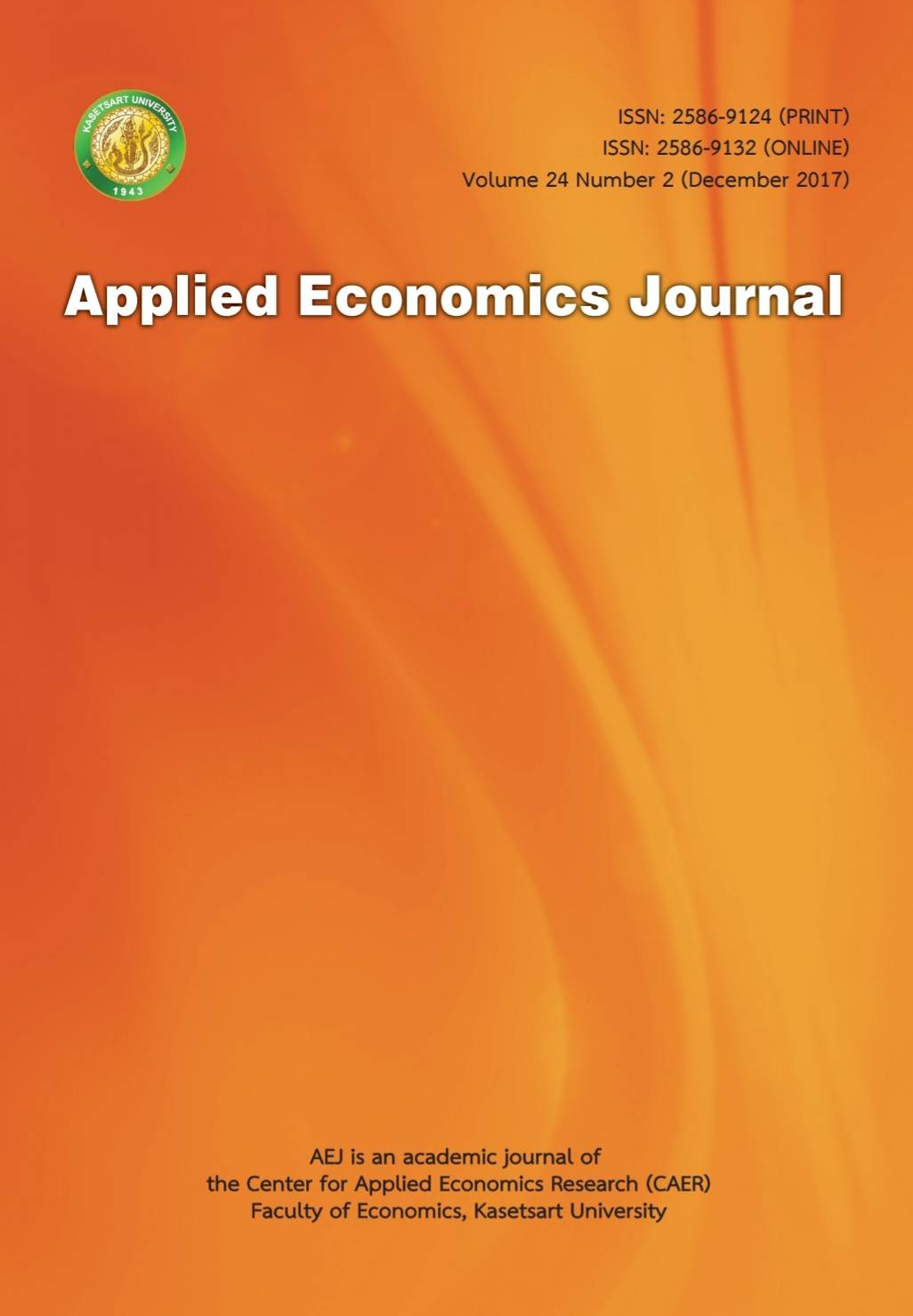The Internal Efficiency Test of SET50 Index Options Market: Call Options vs. Put Options
Main Article Content
Abstract
This study is aimed to test the internal efficiency of SET50 Index Options market and focus on the difference between SET50 Index Call Options pricing relationship and SET50 Index Put Options pricing relationship using the conditions of Call & Put Spreads and Call & Put Butterfly Spreads. Over the sample period from October 29, 2012 through March 30, 2016, although the mispricing and arbitrage opportunities for SET50 Index Options are observed under the case of no transaction costs, there are not much opportunities, less than 10 percent. Even with modest transaction costs, including exchange fees, brokerage commissions, and opportunity cost of initial margin deposit, the frequency of arbitrage opportunities drops to less than 5 percent. Using bid and ask prices rather than closing prices, the arbitrageurs can earn riskless profit with SET50 Index Put Options trading only. With the existence of arbitrage opportunities, Put Spread generates more profit than Call Spread, but the mean sizes of violations for Call & Put Butterfly Spreads are not statistically different. Taking all transaction costs (exchange fees, brokerage commissions, interest on initial margin deposit, and bid-ask spread) into account, arbitrage opportunities in every case are almost eliminated. The SET50 Index Options market is therefore efficient. The result would boost the investors’ confidence to invest in options market.
Article Details
The paper is published under CC BY-NC-ND, in which the article is freely downloaded and shared in its original form non-commercially and its citation details are identified.


